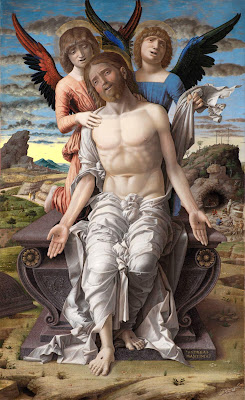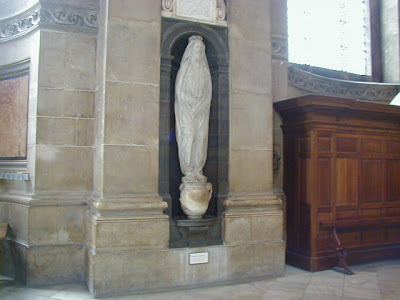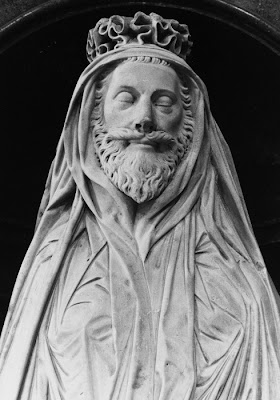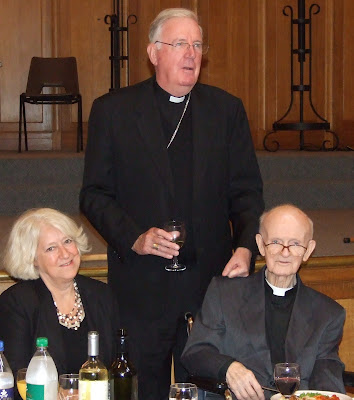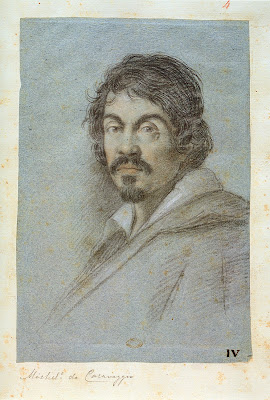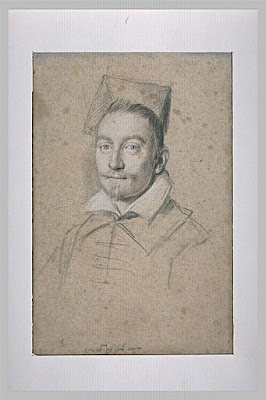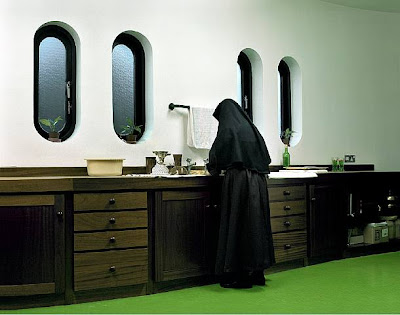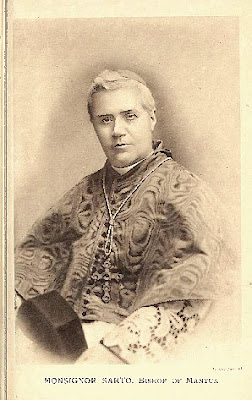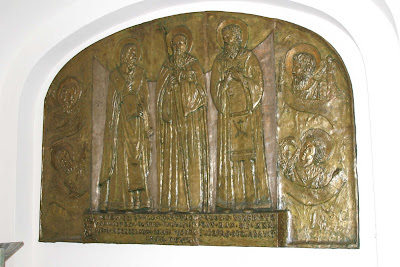



 Gian Lorenzo Bernini ((b. 1598, d. 1680)
Gian Lorenzo Bernini ((b. 1598, d. 1680)Bust of Monsignor Pedro de Foix Montoya
c. 1621
Marble, life-size
Santa Maria di Monserrato, Rome
According to both of Bernini's biographers, when a group of cardinals went to see the bust, one wittily proclaimed that the bust was "Montoya petrified."
When Montoya himself arrived, Cardinal Maffeo Barberini (later Pope Urban VIII) went to greet him, "and, touching him, said, 'This is the portrait of Monsignor Montoya,' and turning toward the statue, 'and this is Monsignor Montoya'"
Pedro de Foix Montoya (1556-1630) was a Spanish cleric and lawyer who worked in the Curia. This was not the first work that he had commissioned from a young Bernini.
In 1619 he commissioned Bernini to execute two companion busts Damned Soul and Blessed Soul. Both are in white marble and still in the Spanish Embassy to the Vatican. Both are an elaboration of the "good death" propounded in Catholic doctrine especially in the counter-Reformation.
The bust became the central feature of a cenotaph for the prelate who died in 1630. The cenotaph was completed in 1632. The bust and the niche in the cenotaph are perfect complements
Santa Maria in Monserrato degli Spagnoli (Saint Mary of Montserrat of the Spaniards) is the Spanish National church in Rome. The present church was formed in 1803-1807, by the fusion of the 15th century church of San Giacomo degli Spagnoli in Piazza Navona, and that of Santa Maria in Monferrato, which from medieval times had served and housed mainly indigent Spanish pilgrims to Rome. The late Monsignor was a benefactor of the Spanish church. That is why his tomb is there.
The bust is of course the work of a genius.
Montoya lives. His presence is overwhelming. Austere and perhaps aloof but his piercing eyes focus our attention. The figure leans forward slightly. It is as if he has been caught "mid-motion". The hair has been modelled in fine parallel waves, shadow creates colour and there is an effect of lightness. Notice the folds in the clothing, slighlty suggesting motion as well as the quality of the material being depicted. Note also the momentary inntensity of expression achieved by slight inclination of the head accompanied by a downward glance from half closed eyes.
Funeral monuments are a rather morbid subject of study. They are studied in art history. Besides being of significance in the history of art, they do shed light on the contemporary attitudes to death and also, by implication, life itself.
This is a completely different conception of a funerary monument from that of Dean John Donne in St Paul`s see below: Last Days and Last Words
Behind both lie completely different visions of Death, and by implication, life itself. The monsignor`s tomb seems to cry out "Remember me!" John Donne`s monument is a sermon and lesson on Death and the life which comes thereafter.



